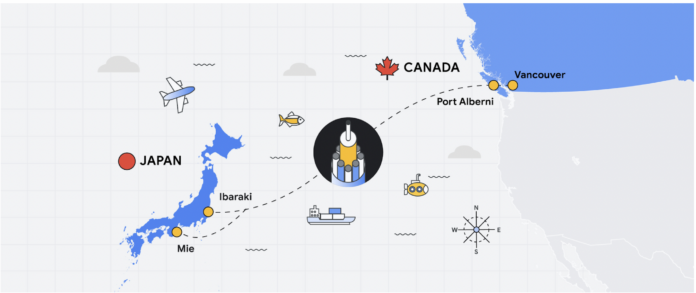Google has 20 announced subsea cable projects in operation or development across more than 200 countries and territories
Google revealed plans to build the world’s first subsea cable to connect Asia and Canada. The Topaz cable, expected to be finished in 2023, will run from Vancouver to Port Alberni and then across the Pacific Ocean to Mie and Ibaraki in Japan.
In a blog post, Google Cloud’s VP and Head of Google Global Networking and Head of Technology and Strategy Bikash Koley described the cable as being “the width of a garden hose,” explain it will house 16 fiber pairs for a total capacity of 240 Terabits per second. “It includes support for Wavelength Selective Switch (WSS), an efficient and software-defined way to carve up the spectrum on an optical fiber pair for flexibility in routing and advanced resilience,” he continued.
For Google, this is unifying project that brings together several local partners in Japan and Canada, and Koley said that other networks and internet service providers will be able to use the cable’s additional capacity, whether for their own use or to provide to third parties.
“And, similar to other cables we’ve built, with Topaz we will exchange fiber pairs with partners who have systems along similar routes,” he wrote. “This is a longstanding practice in the industry that strengthens the intercontinental network lattice for network operators, for Google, and for users around the world.”
While the Topaz subsea cable is the first to connect Asia to Canada, this is not Google’s subsea cable project by any means. The tech company has 20 announced subsea cable projects in operation or development, including the Equiano cable recently deployed in Togo and the 10 terabit per second Faster Cable System, which links the West Coast of the U.S. with Japan and came online in 2016.
According to Koley, additional cables include Curie, Dunant, Firmina and Grace Hopper, and consortium cables like Blue, Echo, Havfrue and Raman, which all connect 29 cloud regions, 88 zones, 146 network edge locations across more than 200 countries and territories.

